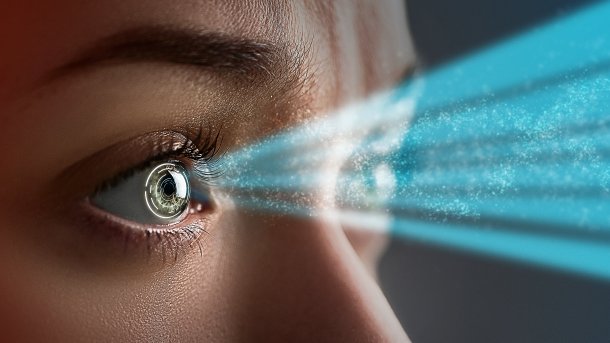Researchers revive retinas of deceased
A supply device prevents damage in removed retinas. This could improve research into eye diseases and make retinal transplants possible.

(Bild: Shutterstock)
(Hier finden Sie die deutsche Version des Beitrags)
The retina cannot be transplanted so far because its viability decreases too quickly after circulatory death. The signals between the light-sensitive retinal neurons and between them and the brain fall silent within seconds or at most minutes, and irreversibly so, as scientists previously thought.
But US scientists have found a way to revive the electrical activity in light-sensitive nerve cells (photoreceptors) of the retina. They published their results in the scientific journal "Nature". They hope that in the long term, this can not only pave the way for the transplantability of the retina, but also make eye diseases more researchable in the short term.
Revitalise the central nervous system
The inspiration for Frans Vinberg's group at the University of Utah came from a Nature paper published in 2019 that reported partial revitalisation of neuronal activity in pig brains after the animals died. If the central nervous system can be revived, perhaps the same is possible for parts of it such as the retina, they reasoned.
Researchers at the Yale School of Medicine in New Haven had removed the pigs' brains shortly after slaughter and up to four hours later rhythmically flushed them through the main blood vessels with a cell-free fluid containing nutrients and oxygen, right down to the smallest capillaries. In parallel, the machine filtered the nutrient fluid in a similar way to a kidney. The supply stopped the death of the nerve cells, which spontaneously transmitted electrical signals again. In addition, the brain vessels also reacted again, for example to vasodilating drugs.
Retina researcher Frans Vinberg and ophthalmologist Anne Hanneken from the Scripps Research Institute in La Jolla, California, first wanted to find out what exactly leads to irreversible retinal damage after death and whether there is a way to reverse these processes. In mouse experiments, they found that of the two main causes, oxygen deprivation and acidosis, the damage caused by the latter can still be reversed hours after death. In the case of oxygen deficiency, however, the time window closes much faster: in the mouse retina within three hours and in human retinas within only one hour, after that the damage is too severe.
Research on the eyes of organ donors
"We realised that eyes obtained by autopsy would not be available fast enough to restore communication [between retinal neurons, editor's note]," Hanneken said in a Nature podcast. So to avoid the hypoxia damage in the first place, the researchers got permission to do research on eyes from organ donors that arrived at their lab within 20 minutes of cardiac death. For the transport, they developed a special container that supplies the organs with oxygen via a nutrient medium.
In the lab, the eyes' photoreceptors reacted to light and sent electrical signals to other photoreceptors. However, this did not mean that the eyes could see, according to the researchers. The visual impression only arises in the visual centre of the brain.
The scientists hope to be able to use their method to better study the physiology of the eye and especially retinal diseases if they are donated the visual organs of deceased people with such conditions. Diseases such as age-related macular degeneration are difficult to study in animal experiments because the mouse retina, for example, does not contain a macula. This area, also called the "yellow spot", is the site of the sharpest vision because it contains more receptor cells. In addition, the effect of drugs on the eyes could also be studied more precisely in this way, the researchers write.
(pavb)